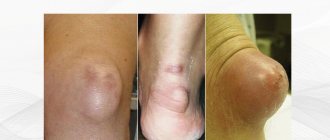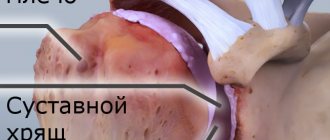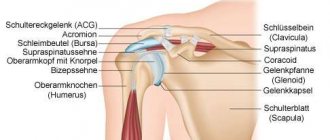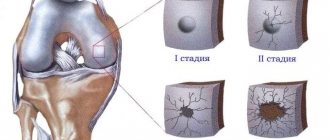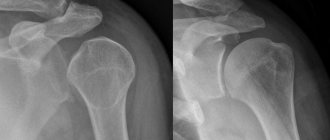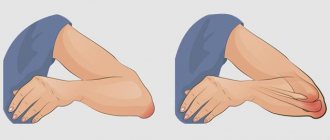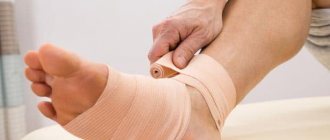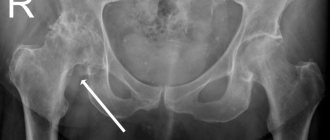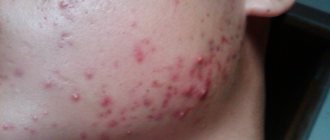Plexitis, or plexopathy, is an inflammation of a bundle of spinal nerves caused by a number of reasons. Brachial plexitis is an inflammatory disease of the brachial plexus, sometimes affecting the cervical plexus due to its proximity. Plexitis of the shoulder joint is diagnosed in patients of all age groups. If left untreated, it can lead to complete immobilization of the shoulder joint and the entire arm.
Types and causes of plexitis
Plexopathy can affect the cervical, shoulder and lumbosacral regions. Separately, solaritis is isolated - damage to the solar plexus.
Most often, the disease plexitis occurs as a result of injuries - severe bruises, dislocations, fractures, stab wounds, gunshot wounds and incised wounds.
Post-traumatic plexitis is sometimes found in neonatology, for example, obstetric paralysis.
In all the described cases, the mechanism of development of the pathology is due to damage to the branches of the nerve plexus (partial or complete rupture of their fibers) or compression of the nerve trunks.
Prevention
To prevent the development of plexopathy, you should adhere to the following preventive measures:
- It is important to avoid situations that could potentially lead to injury.
- Proper management of patients during childbirth is necessary to avoid injury to the baby. In this context, it is important for doctors to make the right decision about the mode of delivery.
- It is important to promptly treat all infectious diseases, as well as chronic diseases.
- It is necessary to prevent disruption of metabolic processes.
- At the first unpleasant manifestations, you should consult a doctor without self-medicating.
- It is recommended to exercise regularly, especially swimming.
- Equally important is a balanced diet with sufficient vitamins and minerals.
- Prevention measures are special for those people who constantly use crutches. The brachial plexus suffers from loading the upper part of the crutch on the axillary region. Therefore, it is very important to choose the right crutches and use them in such a way as to prevent too strong and prolonged load.
Risk factors:
- hypothermia;
- enlarged lymph nodes or tumor formation near nerve clusters;
- scoliosis (pathological curvature of the spine);
- congenital pathologies of the spine;
- metabolic disorders (for example, diabetes);
- autoimmune diseases;
- infectious diseases.
In rare cases, lumbosacral plexitis occurs as a result of venous thrombophlebitis or inflammatory diseases of the pelvic organs, such as prostatitis, cystitis, adnexitis, etc.
Diagnosis of brachial plexus plexitis
Diagnosis of the disease is quite complex, and therefore involves the use of a list of methods:
- questioning and visual examination at a medical consultation;
- neuromyography and electromyography;
- MRI and computed tomography;
- Ultrasound and radiography of joints;
- blood analysis.
The diagnosis and subsequent treatment of shoulder plexitis is carried out by a neurologist. To differentiate brachial plexitis from its other types and similar manifestations of other diseases, a traumatologist, gynecologist, urologist may be involved in the diagnosis, and radiography of the spine and ultrasound of internal organs may also be performed.
Elena Malysheva tells more about shoulder inflammation, as well as how to identify plexitis in yourself:
Symptoms of plexitis
There are two stages during the course of the disease.
- The first is neuralgic. Caused by pain (plexalgia) in the nerve plexus, but radiating to surrounding organs. It often occurs suddenly and intensifies with pressure and movement. Some patients complain of minor sensory disturbances.
- The next stage is paralytic. It is characterized by decreased muscle tone and paralysis. Some tendon reflexes disappear. In areas adjacent to the affected plexus, trophic disorders occur - the skin turns pale, sweating disappears or increases.
The main symptoms of different types of plexitis:
- Cervical – manifested by pain in the lateral region of the neck, radiating to the back of the head and ear area. Sometimes spastic torticollis occurs. Hiccups may occur due to nerve irritation. The suboccipital muscles atrophy.
- Shoulder - pain in the arm, flaccid paresis, atrophy of the muscles of the shoulder and arm. The mobility of the elbow joint is limited. Shoulder dislocations are possible.
- Lumbosacral – pain in the anterior thigh, sacrum and buttocks. It is difficult for the patient to bend and straighten the leg at the hip, which causes gait disturbances and difficulty walking. The sensitivity of the gluteal region and the knee reflex disappear, and contracture develops. Erectile dysfunction, urination and defecation disorders are possible.
What is brachial plexus plexitis?
According to localization, plexopathy can be right- or left-sided, and bilateral plexitis is also common.
Plexite owes its appearance to the influence of internal and external factors, depending on which it is divided into the following types:
- Traumatic, caused by damage to the brachial neurovascular bundle during fractures, dislocations, and sprains of the shoulder joint. This same form includes plexitis received by a newborn during a complicated passage through the birth canal during a pathological birth. Plexitis resulting from exposure to occupational provoking factors is also considered traumatic.
- Infectious, when the nerve fiber is affected by toxins of infections - tuberculosis, herpes viruses, influenza, cytomegaloviruses.
- Infectious-allergic, appearing as a result of a reaction to the administered vaccine.
- Toxic. This type of brachial plexus pathology occurs due to poisoning with alcohol substitutes, mercury salts and heavy metals.
- Dysmetabolic, accompanying endocrine disorders - diabetes, gout, thyroid diseases.
- Compression-ischemic, the mechanism of which is compression of the neurovascular bundle due to the shoulder being in a long non-physiological position - with illiterate immobilization of the injured arm, in a narcotic state after surgical treatment, with the use of incorrectly selected crutches. Nerves can also be compressed by tumors of the joint and periarticular area, enlarged lymph nodes, or hematoma after injury. Poor posture can also be a cause of this form of brachial plexitis.
In addition to the above, plexitis of the shoulder joint can also be caused by osteochondrosis of the cervical and thoracic segments of the spine, when deformed vertebral bodies compress the roots of the spinal nerves; aneurysms of arteries in the shoulder area, frequent and prolonged hypothermia, costoclavicular syndrome (when additional cervical ribs are formed), hyperabduction syndrome (when the shoulder joint is sharply abducted, the nerve bundle is pinched).
Plexitis disease: treatment
Treatment methods depend on the stage and nature of the disease.
If plexopathy occurs after an injury, surgical intervention is required, the purpose of which is to eliminate the cause of compression of the nerve trunks. If the disease is infectious, the use of antibiotics is required.
For any type of plexitis, drug treatment is carried out to improve neuromuscular transmission and metabolic processes in muscle tissue and neuromuscular synapses. For this purpose, Neostigmine, Galantamine, angiotensin-converting enzyme are used. B vitamins are recommended for patients because they have neurometabolic effects.
To eliminate inflammation and pain, anti-inflammatory drugs are prescribed (Diclofenac, Ketorolac, Meloxicam, Ibuprofen). In cases of severe pain, therapeutic blockades are performed.
To improve microcirculation in the affected muscles and plexus tissues, vascular drugs are used, for example, xanthinol nicotinate or pentoxifylline.
Physiotherapeutic procedures have a good effect: massages, phonophoresis, electrophoresis, UHF, acupuncture, radon and hydrogen sulfide baths, ozokerite therapy, mud therapy, amplipulse therapy, etc.
Tests and diagnostics
To confirm the diagnosis, the specialist initially studies the patient’s medical history, conducts an examination and interview. In the diagnostic process, it is important to distinguish plexitis from similar diseases, in particular neuralgia .
During diagnostics, the following studies may be carried out:
- Ultrasound examination of the affected area.
- Electroneurography - to evaluate the impulse that passes along the nerve fibers.
- X-ray of limbs, lungs.
- Laboratory blood test.
- CT and MRI - allow you to get the most accurate results.
Consequences of plexitis
Even with proper treatment, incomplete recovery is possible. Sometimes irreversible persistent paresis, joint contractures, and muscle atrophy remain.
Without treatment, the prognosis is poor; plexopathy can cause serious complications:
- thinning of muscle fibers and a decrease in their total volume;
- loss of sensitivity in the affected part of the body;
- paresis in the limbs.
There are known cases of paralysis of the affected part of the body, which leads to disability of the patient.
Treatment with folk remedies
Folk remedies for the treatment of brachial plexitis can be used as auxiliaries in the process of main treatment. However, they should never replace drug therapy. Before using any of the methods, you should initially check with your doctor.
As a rule, traditional medicine suggests using ointments, compresses and rubbing.
- Vodka-based infusion . 100 g of honey should be mixed with crushed horseradish root, aloe leaf, 20 g of marshmallow and Adam's root. Mix everything, pour in 500 ml of vodka and leave for three days. Rub the resulting infusion into the affected area three times a day.
- Angelica root . It must be crushed and poured with a small amount of boiling water. Leave for 2 hours. Rub the resulting product into the affected area several times a day.
- Willow bark . It must be crushed, pour boiling water and stand for 2 hours. After straining, use the infusion warm for warming compresses.
- Propolis with fat . Mix 3 g of propolis and 50 g of pork fat, mix and use to rub the affected areas.
- Alcohol infusion of mumiyo . It is used for rubbing.
- Herbal baths . To prepare them, use a decoction of mint, chamomile, oak bark, oregano, etc.
- Herbal teas . They are useful as general strengthening agents. They are prepared from chamomile, lemon balm, mint, rose hips, viburnum, etc.
In children
According to statistics, birth plexitis is diagnosed in an average of two children per thousand newborns. The reason for the development of this pathology is problems during childbirth . They are often associated with abnormal fetal position. Injury occurs due to excessive stretching of the nerves, their pressing against bone formations. If the brachial plexus is stretched too much, small vessels rupture and hematomas form within the nerve sheaths. Hematoma and the subsequent formation of adhesions and scars lead to compression of the nerve. The result may be paralysis of the upper limb.
It is very important that such pathology is identified in a timely manner, since delayed treatment can lead to the development of severe disorders. In newborns, brachial plexus injury is determined by the passive position of the arm. During the treatment, bandages and a plastic splint are used to properly fix the arm. Other treatment methods are also used.
If conservative methods do not give the desired results, surgical intervention is performed at an older age of the baby.
Diagnostic methods
Diagnosis of the pathology is quite difficult. A neurologist performs the following diagnostic measures:
- Survey. At the appointment, the doctor finds out how long ago the complaints began and what symptoms are bothering you. Were there any injuries, surgery or vaccinations? Asks the patient if he has diseases such as gout or diabetes.
- Neurological examination . The specialist performs palpation. Evaluates the strength of the arm muscles, the condition of the skin and nails.
- Laboratory research . A blood test can reveal the presence of inflammation and infection.
- Instrumental Research . A CT or MRI of the shoulder and neck is performed to examine the structure of the arm layer by layer and identify any changes that have appeared. Using electroneuromyography, the doctor determines the degree of nerve damage.
If all diagnostic criteria are met, a diagnosis of plexitis is made and appropriate treatment is prescribed.
How does plexopathy manifest itself in symptoms in adults?
There are several types of plexopathy due to the nature of the lesion in a certain area of the nerve plexuses. Let's consider the types of disease:
- traumatic;
- compression due to neoplasms: tumors, hernias, protrusions, etc.
Examples:
- Plexopathy in the sacrum and lumbar region often occurs against the background of decreased function processes in the intervertebral discs due to hernias or protrusions.
- Neck plexopathy affects the nerve plexuses near the back of the skull that control a group of muscles.
- Brachial plexus plexopathy is common due to the position of the nerve ganglion - which is located in a place where there is a high risk of injury. In patients who consult a doctor, brachial plexopathy is diagnosed as post-traumatic.
Reasons for the development of the disease
The following factors can lead to inflammation of nerve fibers:
- injuries in the shoulder joint;
- osteochondrosis;
- injury to the child during the birth process;
- hypothermia;
- viral and bacterial infections;
- metabolic disorders;
- prolonged compression of the nerve plexuses;
- allergic reactions to vaccinations;
- intoxication.
The most common is infectious plexitis of the shoulder (in 28% of cases).
First aid for back and shoulder pain
It doesn’t matter whether the pain in your shoulders and upper back is severe or tolerable, you need to seek qualified help. Since the nature of pain is often neurological, it is worth making an appointment with a neurologist. Doctors working in the medical field have extensive work experience and high ratings on the ProDoctors review site. They specialize in treating all neurological conditions that lead to shoulder and back pain.
In addition to a neurologist, you may need the help of an orthopedist-traumatologist
Before going to the clinic, in order to reduce the intensity of the pain syndrome, you should follow the recommendations:
- do not put stress on the sore shoulder: do not carry bags, refuse physical work, do not perform exercises, do not make sudden movements or turns;
- refrain from thermal procedures;
- minimize any movements, up to complete immobilization by fixing the shoulder to the body.
If the pain is severe and cannot be tolerated, you can take a painkiller. But it is better to apply ice to the sore spot through a cloth for 10-15 minutes. It will reduce swelling and pain caused by pinched nerve endings.
If the pain syndrome is moderate, before seeing a doctor you should refrain from using medications that can blur the clinical picture.
List of sources
- Berdyeva, E. B. Complex conservative treatment of traumatic brachial plexitis / E. B. Berdyeva, O. M. Babaeva, A. K. Tushieva. — Text: immediate // Young scientist. - 2016. - No. 21 (125). — P. 52-54.
- Wayne A.M. Diseases of the autonomic nervous system: a guide for doctors. - M.: Medicine, 1991. - 432 p.
- Karlov V. A. Therapy of nervous diseases. M., 1996.
- Plexit. Brief medical encyclopedia / Ch. editor B.V. Petrovsky. - M.: Soviet Encyclopedia, 1989.
Methods complementary to drug treatment
After the acute inflammatory process has passed, you can use massage, in combination with physiotherapy: electrophoresis, ultrasound, ozokerite, magnetic therapy. Constant therapeutic exercises will help consolidate the results. Balneotherapy, reflexology, laser therapy, cryotherapy will help stimulate nervous activity and relax muscles where necessary.
If pharmacological drugs in combination with additional treatment measures do not produce the desired results, surgical treatment methods will have to be used. In such cases, a neurosurgical operation will be performed, which helps restore the integrity of the nerve chain or relieve pressure on the nervous system.
Home remedies
For example, the use of traditional methods of treatment is allowed for shoulder plexopathy, but after consultation with the doctor and as an additional measure to the main therapy. The following are considered effective means at hand:
Ointments using propolis. You need to melt 15 g of animal fat in a water bath, then add 1 g of propolis. Stir until smooth and leave to cool. Use for external use with massage in the sore area 2-3 times a day; Bath with mint. Pour 1 liter into a kettle, then add 5-7 tablespoons of mint leaves, leave for 3 minutes, then pour into a warm bath. Take a bath for up to 30 minutes.
